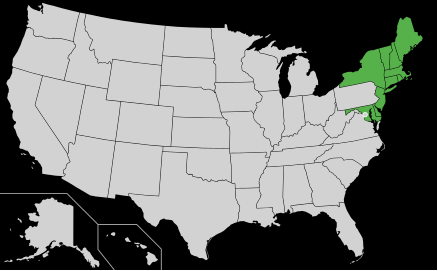Interview with Barbara Arrindell of DCS
December 5, 2015Letter to President Obama on Methane Emissions
December 11, 2015By Suzanne Goldenberg, The Guardian, December 4, 2015
It’s the climate equivalent of the BP disaster in the Gulf of Mexico: the rupture of a natural gas storage site in California that is spewing vast amounts of methane into the atmosphere and is likely to go unchecked for three months.
The breach of the Aliso Canyon natural gas storage site, near Porter Ranch has forced the relocation of hundreds of families, who complained of headaches, nosebleeds and nausea from the rotten-egg smell of the odorant added to the gas to aid in leak detection.
The leak, which was detected on 23 October, now accounts for at least a quarter of California’s emissions of methane – a far more powerful climate-altering gas than carbon dioxide.
Already, the ruptured storage facility has released well over the equivalent of 800,000 metric tons of carbon dioxide – about the same amount that would be generated by driving 160,000 cars for a year, according to the California Air Resources Board.
Campaigners say the circumstances of the breach are a blot on claims by the US and California to be leading the fight against climate change. A group of residents are suing the gas company and state regulators.
“This is a terrible man-made disaster. It is causing massive problems with so much methane being released, and it is going to continue at least until March,” said Richard Mathews, a computer engineer who is running for California state senate from Porter Ranch. “This is going to contribute to a lot of warming. It really is having a terrible effect.”
Methane is 80 times more powerful than carbon dioxide as a climate-altering gas, in the short-term.
Barack Obama this week led off a series of appearances by political leaders at a summit in Paris, intended to underline US commitment to a strong climate deal.
The time lag and the scale of the breach brought immediate comparisons to BP’s oil disaster in the Gulf of Mexico, which killed 11, caused lasting environmental damage to the marine wildlife and environment, and took three months to bring under control.
The California breach has caused no serious injury so far, but it is already having a marked global warming effect, campaign groups said.
Melissa Bailey, a spokeswoman for the company, said on Friday it could take three or four months to plug the leak. “This is a very unique leak,” she said. “All of our attempts to kill the well haven’t worked.” She said crews had made six attempts to stop the release of methane by pumping fluid into the storage well, which extends to a depth of 8,500ft. She said the relief well was assured of success.
“These types of wells are a proven approach to shutting down oil and gas wells. Once cement is pumped in, the gas reservoir is cut off from the leaking well and gas can no longer escape. The new well will not be placed into storage operations. It will only be an observation well to monitor the storage reservoir,” Bailey wrote in an email.
However, plugging the well won’t be quick. “The relief well process will probably take three or four months to complete. It takes that long because it essentially involves steering a tool to find a seven-inch pipe, more than a thousand feet away, thousands of feet below ground. Magnetics are used to locate the leaking well,” Bailey said.
However, Mathews said that was an overly optimistic estimate, and that heavy rain expected in an El Niño year could slow down those efforts. “It can be days or weeks of probing around at a distance of 8,500ft, drilling to try and hit a seven-inch target and it’s so easy to miss,” he said.
The breach of the California storage facility has drawn renewed attention to US ageing natural gas infrastructure, which is vulnerable to such breaches as well as slow methane leaks.
The natural gas storage site is one of the biggest such facilities in the western US, and was originally built for the oil industry about 60 years ago. When the oil fields went dry, the infrastructure was repurposed, with the 8,000-foot well used as a storage site.
R Rex Parris, who is representing Porter Ranch residents in a law suit against the gas company, said California should outlaw the use of underground injection wells for storage.
In addition to the risk of leaks, such as this one, he said the injection wells are a threat to California’s water aquifers.



